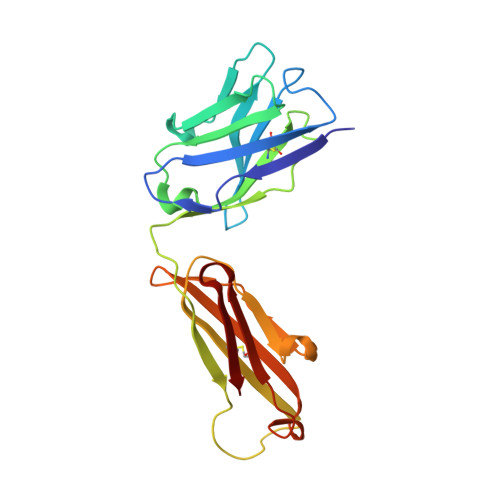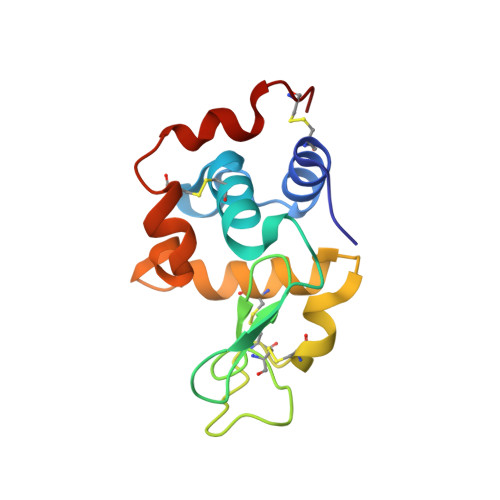X-ray snapshots of the maturation of an antibody response to a protein antigen
Li, Y., Li, H., Yang, F., Smith-Gill, S.J., Mariuzza, R.A.(2003) Nat Struct Biol 10: 482-488
- PubMed: 12740607
- DOI: https://doi.org/10.1038/nsb930
- Primary Citation of Related Structures:
1NDG, 1NDM - PubMed Abstract:
The process whereby the immune system generates antibodies of higher affinities during a response to antigen (affinity maturation) is a prototypical example of molecular evolution. Earlier studies have been confined to antibodies specific for small molecules (haptens) rather than for proteins. We compare the structures of four antibodies bound to the same site on hen egg white lysozyme (HEL) at different stages of affinity maturation. These X-ray snapshots reveal that binding is enhanced, not through the formation of additional hydrogen bonds or van der Waals contacts or by an increase in total buried surface, but by burial of increasing amounts of apolar surface at the expense of polar surface, accompanied by improved shape complementarity. The increase in hydrophobic interactions results from highly correlated rearrangements in antibody residues at the interface periphery, adjacent to the central energetic hot spot. This first visualization of the maturation of antibodies to protein provides insights into the evolution of high affinity in other protein-protein interfaces.
- Center for Advanced Research in Biotechnology, W.M. Keck Laboratory for Structural Biology, University of Maryland Biotechnology Institute, 9600 Gudelsky Drive, Rockville, Maryland 20850, USA.
Organizational Affiliation:


















